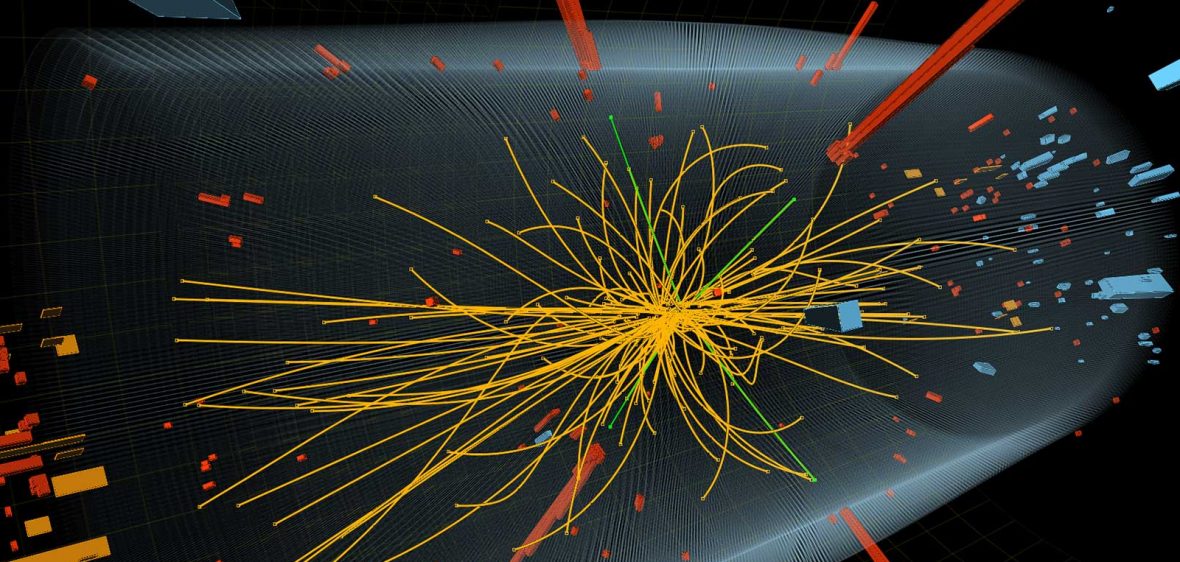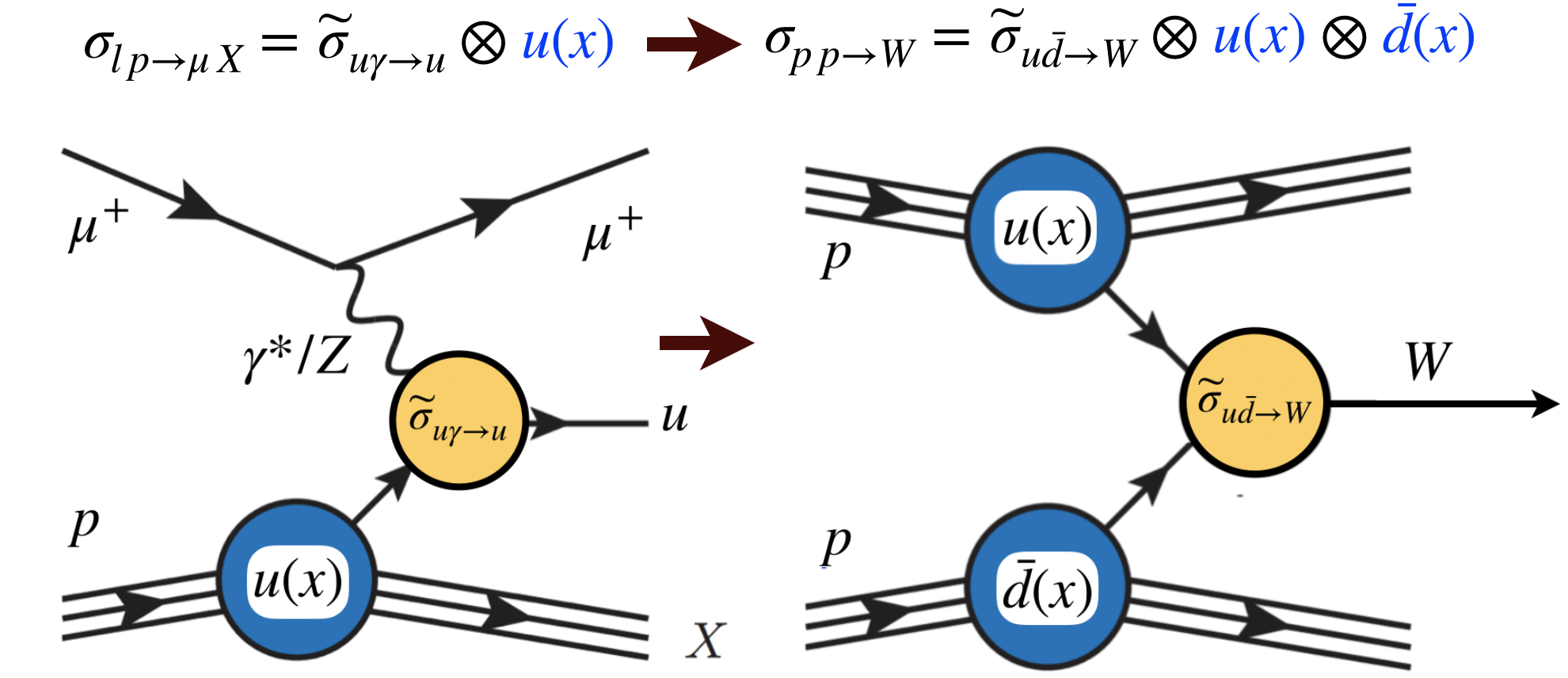This page contains information about the various research software development projects in which I am currently involved or have been involved in the past.
- NNPDF parton distributions. I am one of the members of the NNPDF Collaboration whose main goal is to develop sets of parton distribution functions (PDFs), a crucial ingredient for LHC phenomenology. The webpage of the collaboration provides detailed information about our approach and results, while the various NNPDF sets are available from the LHAPDF library.
- SMEFiT. This framework provides global analyses of the Standard Model Effective Field Theory (SMEFT). Its proof-of-concept resulted in its most systematic analysis to date of the top quark sector of the SMEFT. A series of SMEFiT public tools allows users to extend and apply our results to new datasets using methods such as Bayesian reweighting.
- ML4EFT. General open-source framework for the integration of unbinned observables into global fits of particle physics data. It makes use of machine learning regression and classification techniques to parameterise high-dimensional likelihood ratios, and can be integrated into global analyses of, for example, the Standard Model Effective Field Theory and Parton Distribution Functions. The code, pre-trained models, documentation, and tutorials are available here.
- NNSFnu. A software framework that makes possible the determination of inelastic neutrino structure functions in the complete ranges of energies relevant for phenomenology, from oscillation measurements in the GeV range to astroparticle physics in the EeV range. Accessible from its GitHub page, we provide fast interpolation grids in the LHAPDF format for neutrino structure functions valid for the complete range of (x,Q,A) values together with driver codes and look-up tables for inclusive neutrino cross-sections for all relevant target materials.
- NuPropEarth. A Monte Carlo event generator that evaluates the impact of matter effects in the propagation of high energy neutrinos, with precise calculations of the neutrino-nucleon cross-sections are provided by the HEDIS module of GENIE. NuPropEarth allows studying the dependence of the neutrino attenuation rates on the cross-section models, the Earth model, the incidence angle, and the spectral index of the incoming flux. The code is publicly available from its GitHub repository.
- The BGR18 UHE neutrino-nucleus cross-sections. We presented in this paper a state of the art calculation of the ultra-high-energy (UHE) neutrino-nucleus scattering cross-sections in the Standard Model which include both small-x BFKL resummation effects and the constraints from charm production at LHCb. The structure function grids and the corresponding integrator code is publicly available here.
- EELSfitter is an open-source Python-based framework developed for the analysis and interpretation of Electron Energy Loss Spectroscopy (EELS) measurements in Transmission Electron Microscopy (TEM). It constructs a model-independent parametrisation of the zero-loss peak (ZLP) intensity distribution in terms of artificial neural networks and the Monte Carlo replica method and implements an efficient subtraction strategy of the ZLP for spectra recorded on specimens for applications such as bandgap determination. The code is publicly available from its GitHub repository. Furthermore, a detailed documentation and usage instructions is available here.

- HL-LHC and LHeC PDF projections. We have carried out projections about the ultimate PDF uncertainty reduction that can be expected at the HL-LHC and the LHeC. The PDF4LHC15 sets have been profiled with HL-LHC and LHeC pseudo-data in various scenarios, and can be downloaded in LHAPDF format from Zenodo. These projections have been used in HL-LHC analysis such as those reported in this Yellow Report.
- Precision determination of the small-x gluon from LHC charm production. The fits based on the NNPDF3.0 global analysis supplemented with LHCb data at 5 TeV, 7 TeV and 13 TeV, leading to an improved determination of the small-x gluon PDF, presented in this work, can be used for calculations in neutrino astronomy and cosmic ray physics, Monte Carlo event generators and for studies at future high-energy colliders. These fits are publicly available in the LHAPDF6 format, for the N5+N7+N13 combination and for the N7+R13/5 combination in the Nf=5 scheme. A variant of these fits in the Nf=3 (fixed-flavour-number scheme) is also available for the N5+N7+N13 combination.
- APFEL online Graphical User Interface. A web server that provides easy online access to the GUI of the APFEL parton evolution program, and its flexible plotting functionalities that allow to perform a wide range of comparisons between different PDF sets at the level of parton distributions, parton luminosities and DIS structure functions.

- PromptNuFlux. This code provides a state-of-the-art calculation of the prompt atmospheric neutrino fluxes for a wide range of neutrino energies and various models for the cosmic ray flux, including theoretical uncertainties.
- aMCfast. The availability of fast interfaces to NLO and NLO+parton shower computations is essential to include hadron collider data into global PDF analysis. aMCfast, also hosted in HepForge (), is a fast interface to Madgraph5_aMCatNLO program based on the APPLgrid framework, which provides an automation of fast NLO and NLO+PS interfaces for arbitrary collider processes, already for QCD corrections and soon for NLO EWK corrections as well.
- APFEL, A Parton distribution Function Evolution Library with QED corrections, is a PDF evolution program which provides predictions up to NNLO in the QCD coupling and up to LO in the QED coupling. APFEL is available via the HepForge repository. A Graphical User Interface is also available with a variety of plotting tools for PDFs and parton luminosities
- SMPDF. A web server that provides user-friendly, interactive access to the SM-PDF package for the construction of specialized PDF sets taillored for specific LHC applications. This tool also includes the mc2hessian code, that generates Hessian sets starting from an input PDF set in the Monte Carlo representation.
- HOPPET, a Higher Order Perturbative Parton Evolution Toolkit, is a Fortran95 package capable of performing PDF evolution up to NNLO QCD and to perform a variety of related operations on parton distributions. It is available from this link.
- JetQuality is an on-line tool which allows the user to check the performance of a wide variety of jet clustering definitions for kinematic reconstructions at hadron colliders.

